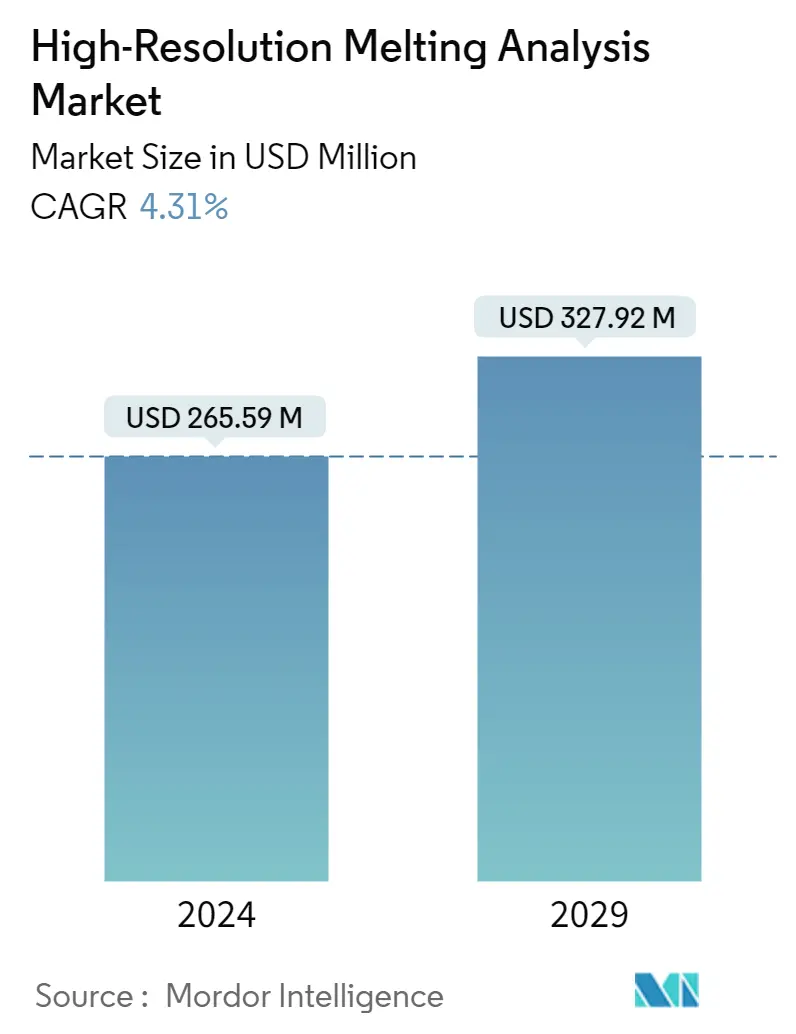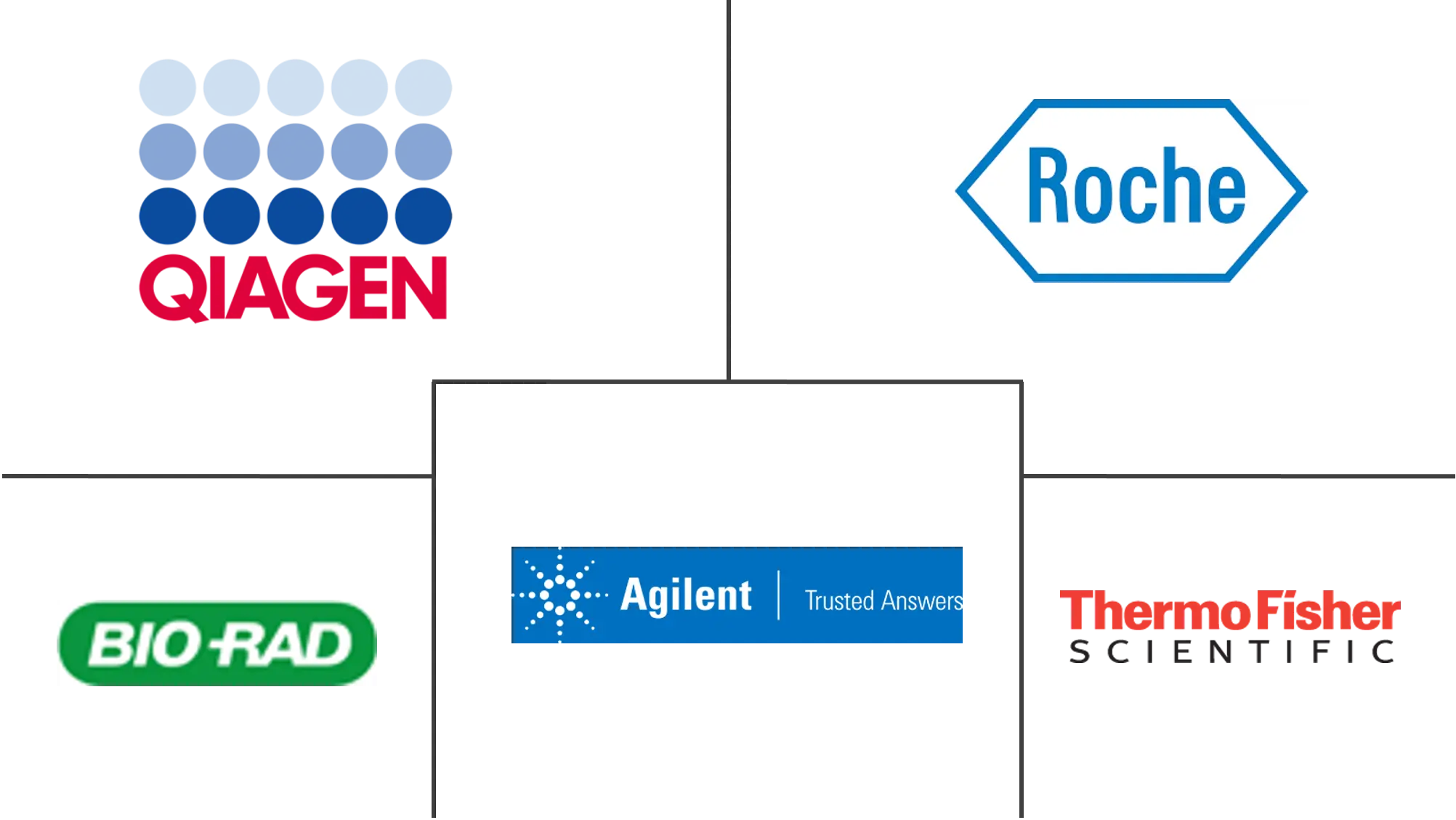Market Size of High-Resolution Melting Analysis Industry

| Study Period | 2021 - 2029 |
| Market Size (2024) | USD 265.59 Million |
| Market Size (2029) | USD 327.92 Million |
| CAGR (2024 - 2029) | 4.31 % |
| Fastest Growing Market | Asia Pacific |
| Largest Market | North America |
Major Players
*Disclaimer: Major Players sorted in no particular order |
Need a report that reflects how COVID-19 has impacted this market and its growth?
High-Resolution Melting Analysis Market Analysis
The High-Resolution Melting Analysis Market size is estimated at USD 265.59 million in 2024, and is expected to reach USD 327.92 million by 2029, growing at a CAGR of 4.31% during the forecast period (2024-2029).
The High-Resolution Melting (HRM) analysis is one of the novel techniques that help researchers understand the variations in nucleic acid sequences. Therefore, this technique was widely used during the COVID-19 pandemic. The HRM analysis is used to differentiate the various types of viruses and their composition. The researchers used HRM analysis to discriminate between the SARS-CoV-2 Omicron variants BA.1 and BA.2. Similarly, mutations in the coronavirus were studied with the help of HRM analysis during the pandemic. As per the September 2022 data published by Biochemistry and Biophysics Journal, it was observed that HRM analysis played a key role while differentiating between various strains of the coronavirus. It also contributed largely to understanding the characteristics of the coronavirus and its nuclear composition. Hence, with the effectiveness of HRM analysis, it is believed that the market studied was positively affected during the pandemic. Moreover, even after the pandemic, there is a growing use of HRM analysis which may drive market growth in the post-pandemic era.
The primary factor contributing to the market's growth is the increase in genetic disorders and infectious diseases. According to the WHO 2021 data, approximately 50,000 people die daily from contagious diseases. 30 new diseases have surfaced in the last 20 years, threatening the health of hundreds of millions of people. The rising burden of infectious diseases globally contributes mainly to market growth. Furthermore, the growing usage of HRM (High-Resolution Melting) in identifying pathogens and the advantages of HRM over other genotyping techniques are boosting the market growth. However, the HRM analysis's technical limitations are the market growth's major drawback.
Furthermore, the increasing occurrence of rare genetic diseases is augmenting the demand for novel techniques, such as HRM analysis, to understand the cause of the disease and provide better treatments. The research suggests that around 70% of rare diseases have genetic causes. Data published by Research Centre for Medical Genetics in August 2021 indicates that there were more than 45,000 people across the rural areas of Europe with rare hereditary diseases. Similarly, as per the Orphanet portal of rare diseases, around 10,500 rare diseases are registered worldwide as of 2022. With an increasing rare genetic disease burden, it is expected that the use of HRM analysis will increase, which is believed to propel market growth.
However, technical limitations associated with HRM analysis are expected to hinder market growth to some extent.
